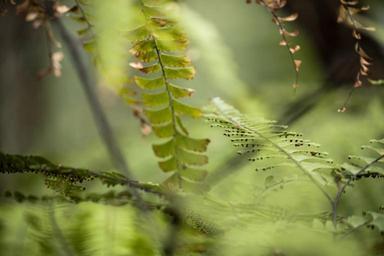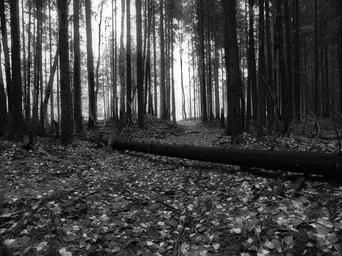Introduction
In today's fast-paced, image-driven world, art has evolved into various forms of self-expression. Among those forms, faceless self portraits stand out as a unique way for artists to explore identity while maintaining a veil of anonymity. This article dives into the concept of faceless self portraits as a form of anonymous artistic expression, unraveling its significance, aesthetic appeal, and the psychological undertones behind creating such art.
Faceless Self Portraits as a Form of Anonymous Artistic Expression
The idea of self portraiture traditionally revolves around the artist's physical representation. However, when one embraces faceless self portraits, they embark on an intriguing journey exploring more than just their outer appearance. It becomes an avenue for self expression that transcends societal expectations and norms associated with identity.
The Psychology Behind Faceless Self Portraits
Art holds a mirror to human emotions and thoughts. In the case of faceless self portraits, the absence of facial features often speaks volumes about the artist's inner world.
- Emotional Release: Artists may choose to omit their faces to express complex emotions that might not be easily conveyed through traditional portraiture. Exploration of Identity: By removing physical identifiers, artists can delve deeper into their psyche and explore aspects of their identity that are often overlooked.
Aesthetic Appeal in Faceless Self Portraits
Visually striking aesthetics play a crucial role in attracting viewers. The allure of faceless self portraits lies in their ability to evoke curiosity and provoke thought.
- Color Palette: Artists often employ vibrant colors or subtle tones to elicit different emotional responses from viewers. Composition: The arrangement of non-facial elements offers an opportunity for creative storytelling without relying on facial expressions.
Understanding Contemplative Photography
Faceless self portraits align closely with the principles of contemplative photography. This genre encourages artists to engage deeply with their subjects, inviting viewers on an introspective journey.
What is Contemplative Photography?
Contemplative photography focuses on capturing moments that prompt reflection and mindfulness. It encourages photographers to slow down and appreciate the beauty around them—an essential component when creating faceless self portraits.
Why Do Many Contemporary Printmakers Prefer Linocut to Woodblock Printing?
While discussing artistic techniques, it's worthwhile noting that many contemporary printmakers prefer linocut over woodblock printing due to its accessibility and versatility. Linoleum is easier to carve than wood, allowing for more intricate designs and quicker production times. This technique aligns well with the simplicity often found in faceless artwork.
Exploring Aesthetic Self Portrait Photography
The Essence of Aesthetic Self Portrait Photography
Aesthetic self portrait photography emphasizes beauty in composition, colors, lighting, and subject choices. Artists strive for images that are not only visually appealing but also resonate with deeper meanings.

Tips for Capturing Aesthetic Self Portraits:
Natural Light: Utilize soft lighting during golden hours for flattering results. Background Selection: Choose aesthetically pleasing backgrounds that enhance the overall composition. Props & Accessories: Incorporate items that reflect your personality or mood without revealing your face.Rare Home Interior Pictures: Adding Depth to Your Art
When it comes to enhancing aesthetic environments where art resides, rare home interior pictures can infuse spaces with character and style.
- These images not only beautify walls but also serve as conversation starters. They can complement faceless self portraits by providing context or ambiance within which these artworks exist.
Aesthetic Photos Wall: Creating Your Gallery
Crafting an aesthetic photos wall allows one to showcase various forms of art while creating a cohesive visual experience.
Steps to Create an Aesthetic Photos Wall:
Select Your Artworks: Choose pieces from various genres including faceless self portraits. Frame Choices: Opt for frames that harmonize with each other while emphasizing individual pieces' aesthetics. Arranging Layouts: Experiment with various arrangements until you find one that feels balanced yet dynamic.Self Expression Through Abstract Self Portrait Photography
Abstract self portrait photography allows artists even more freedom in expressing their thoughts and feelings without being confined by realism or traditional standards.

Unleashing Creativity with Abstract Techniques
This genre often employs symbolic elements like shadows, reflections, or silhouettes instead of direct representations—a perfect fit for those pursuing anonymity through art.
Tips for Abstract Self Portraiture:
- Embrace experimentation: Use different angles and perspectives. Play with textures: Incorporate natural elements like water or foliage into your compositions. Focus on movement: Capture fleeting moments that convey emotion rather than static poses.
Portrait Photo Trends in Modern Art Photography
The landscape of portrait photography has shifted considerably over time—faceless concepts have become increasingly popular among contemporary photographers seeking new ways to engage audiences.
Emerging Trends in Portrait Photography
Minimalism: Focusing on fewer elements enhances visual impact. Environmental Portraits: Including surroundings adds context without focusing on facial details. Conceptual Themes: Illustrating ideas instead of subjects invites deeper engagement from viewers.FAQs About Faceless Self Portraits
Q1: How do I create a faceless self portrait?
A1: To create a faceless self portrait, focus on capturing your body language or use props covering your face while emphasizing other aspects (e.g., clothing or surroundings).
Q2: What are some common themes explored in faceless self portraits?
A2: Common themes include identity exploration, emotional expression, anonymity versus visibility, and societal roles.
Q3: Can I sell my faceless self portrait art?
A3: Yes! Many artists successfully sell their work online through platforms like Etsy or personal websites by showcasing unique styles appealing to collectors.

Q4: Is there symbolism behind using a faceless approach?
A4: Absolutely! The lack of facial features can symbolize vulnerability and introspection while allowing viewers room for interpretation regarding identity.
Q5: How does contemplative photography relate to this genre?
A5: Both focus on eliciting emotional responses; contemplative photography encourages mindfulness while exploring deeper meanings—similar goals found within faceless works!
Q6: Are there specific techniques beneficial for capturing aesthetic-related photographs?
A6: Yes! Techniques such as using natural light strategically paired with thoughtful composition enhance http://reflectivejourney376.yousher.com/large-canvas-hanging-tips-elevate-your-space-with-stunning-portraits aesthetic quality significantly!
Conclusion
Faceless self portraits serve as a profound medium for anonymous artistic expression—offering insights into identity while challenging traditional notions associated with portrayal in art forms like photography and fine arts alike. The absence of facial features creates space for broader interpretations around emotions experienced by both viewer and creator alike; ultimately enriching our understanding about ourselves amid vast complexities surrounding human existence itself!
By embracing concepts such as aesthetic colorful portrait photography combined alongside contemplative practices; we open doors towards exploring untapped potential within each stroke captured through lens—transforming ordinary moments into extraordinary expressions reflecting who we truly are beneath surface appearances alone!